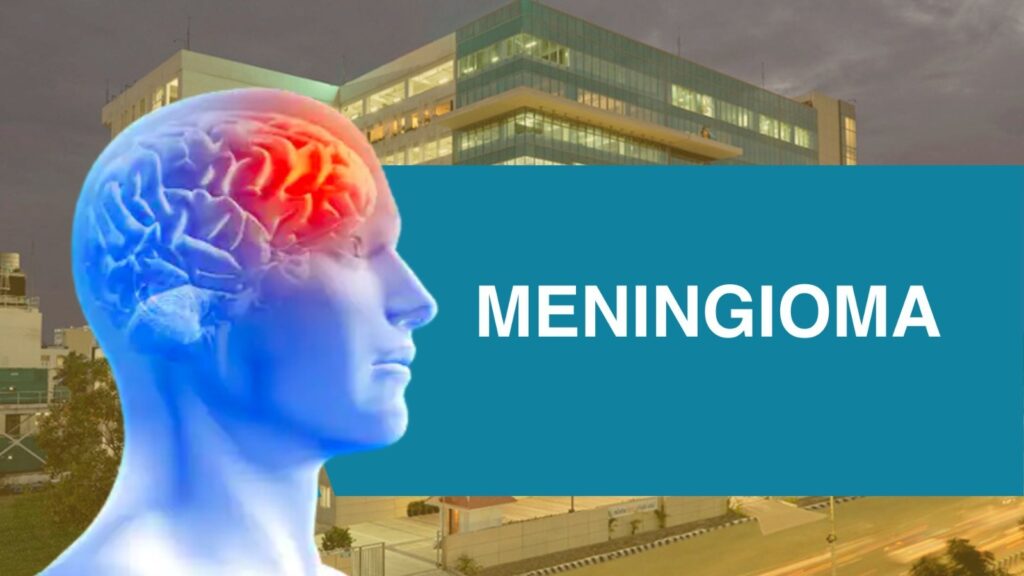Meningioma: Causes, Symptoms, and Treatment
What is meningioma?
A meningioma is a specific kind of brain tumour that develops in the meninges that encircle the brain and spinal cord. Meningiomas typically grow slowly and are benign, meaning they are not malignant. If they put pressure on delicate regions of the brain or spinal cord, however, they may result in symptoms and issues.
About one-third of all brain tumours are meningiomas, which are the most prevalent kind of brain tumour in adults. Women and those over 50 years old are most likely to experience them.
Meningioma symptoms might include headaches, seizures, memory loss, vision issues, and personality or behavioural changes. Radiation therapy, surgery to remove the tumour, or observation may be used as a treatment option if the tumour is tiny and not producing any symptoms.
Why is it challenging to treat meningioma?
Meningiomas are sometimes challenging to treat for the following reasons:
- Location: Meningiomas can develop anywhere in the brain or spinal cord, and if they do, they may be challenging to reach or remove.
- Size: Due to their higher surface area and potential for deeper brain embedding, large meningiomas may be more challenging to remove.
- Recurrence: Meningiomas frequently come back after being treated, necessitating further operations or other therapies.
- Surgery to remove a meningioma may harm neighbouring brain tissue, which could lead to problems or have long-term implications on how the brain functions.
- Meningiomas could be close to blood vessels, which could make bleeding more likely following surgery.
- Meningiomas are often treated according to a number of parameters, such as the size and location of the tumour, the severity of the symptoms, and the patient’s general health. The optimum treatment strategy will be decided by a group of medical experts and will rely on the specific case.
In general, the treatment of meningiomas depends on a number of factors, including the size and location of the tumor, the severity of symptoms, and the overall health of the patient. The best treatment approach will depend on the individual case and will be determined by a team of medical professionals.
Best treatment for meningioma
The size and location of the tumour, the severity of the symptoms, and the patient’s general health all affect the optimal course of action for meningioma. Meningioma treatments frequently used include:
- Surgery: Surgery is frequently the initial course of action for meningiomas and is typically advised if the tumour is big or causing symptoms. In order to preserve as much healthy brain tissue as feasible, the surgeon will attempt to remove as much of the tumour as possible
- Radiotherapy: Radiotherapy uses high-energy radiation beams to destroy cancer cells or reduce tumours. For meningiomas that cannot be medically removed, it may be suggested as a primary treatment, or as a follow-up procedure following surgery to lower the chance of recurrence
- Observation: Rather than undergoing surgery or radiotherapy, it might be possible to just observe the meningioma with routine imaging examinations if it is tiny and not producing any symptoms. This strategy is referred to as “watchful waiting.
A team of medical experts, including a neurosurgeon, a neurologist, and a radiation oncologist, will decide the best course of action for each specific instance of meningioma. This is vital to keep in mind.
Why is meningioma treatment with proton beam therapy effective?
Proton beam therapy is a form of radiation therapy that targets cancer cells with high-energy beams of radiation rather than X-rays. Meningiomas and other types of brain tumours are frequently treated with it because it enables more exact targeting of the tumour while reducing exposure to nearby healthy tissue.
The fact that proton beam therapy provides a high dosage of radiation to the tumour while limiting the quantity of radiation absorbed by the surrounding tissue is one of its key benefits. This can lessen the chance of radiation therapy adverse effects and long-term consequences.
Meningiomas that cannot be surgically removed or that have returned after prior treatment may respond well to proton beam therapy. In order to lower the chance of recurrence, it can also be used as an adjuvant therapy (in conjunction with chemotherapy or surgery).
It’s crucial to remember that not all patients may be candidates for proton beam therapy and that it is not always available. The choice to employ proton beam therapy for meningioma treatment will be determined by a variety of variables, including the size and location of the tumour, the patient’s general health, and the accessibility of proton beam therapy at a nearby treatment facility.
To choose the best course of action for your unique situation, it’s crucial to explore all of your treatment options with your medical team.
Surgery for treating meningioma
Surgery is often the first line of treatment for meningiomas and is usually recommended if the tumor is causing symptoms or if it is large. The goal of surgery is to remove as much of the tumor as possible while preserving as much normal brain tissue as possible.
There are several different approaches that may be used to surgically remove a meningioma, depending on the size and location of the tumor. These approaches may include:
- Craniotomy: This is a surgical procedure in which a portion of the skull is removed to access the brain. A craniotomy may be used to remove large meningiomas or those that are located in hard-to-reach areas of the brain.
- Stereotactic radiosurgery: This is a non-invasive procedure that uses focused beams of radiation to target and destroy the tumor. It may be used for small or medium-sized meningiomas that are located in hard-to-reach areas of the brain.
- Endoscopic surgery: This is a minimally invasive surgical procedure that uses a thin tube with a camera and surgical instruments to access the brain through small incisions in the scalp. Endoscopic surgery may be used for small or medium-sized meningiomas that are located in the front of the brain.
The type of surgery that is recommended for a meningioma will depend on a number of factors, including the size and location of the tumor, the overall health of the patient, and the preference of the surgeon. It’s important to discuss all of your treatment options with your healthcare team to determine the best approach for your individual case.
Radiation for meningioma
Like chemotherapy, radiation therapy is not usually the first line of treatment for meningioma. Surgery is typically the preferred treatment, as it can often remove the entire tumor. If the tumor is not completely resectable or if it recurs after surgery, radiation therapy may be considered as a secondary treatment option.
There are several types of radiation therapy that may be used to treat meningioma, including external beam radiation therapy and brachytherapy. External beam radiation therapy delivers high-energy x-rays or other types of radiation to the tumor from a machine outside the body. Brachytherapy involves placing a small device containing radioactive material directly into or near the tumor.
The decision to use radiation therapy to treat meningioma will depend on several factors, including the size and location of the tumor, the patient’s overall health and medical history, and the potential side effects of radiation therapy. It is important to discuss the potential risks and benefits of radiation therapy with a healthcare provider before starting treatment.
Radiation versus Proton Beam Therapy for treating meningioma
Both external beam radiation therapy and proton beam therapy are options for treating meningioma. However, proton beam therapy is a newer and more specialized form of radiation therapy that may have some potential advantages over traditional external beam radiation therapy.
One potential advantage of proton beam therapy is that it can deliver a high dose of radiation directly to the tumor, while minimizing exposure to surrounding healthy tissue. This may be especially beneficial for tumors located near sensitive structures such as the optic nerves or brainstem. Proton beam therapy may also be associated with fewer short-term side effects, such as nausea and fatigue, compared to traditional external beam radiation therapy.
However, proton beam therapy is not widely available and may not be an option for all patients. Apollo Proton
Cancer Centre is the only cancer hospital in India and South Asia that offers the Proto Beam therapy. The decision to use proton beam therapy or external beam radiation therapy to treat meningioma will depend on several factors, including the size and location of the tumor, the patient’s overall health and medical history, and the potential side effects of each treatment. It is important to discuss the potential risks and benefits of both treatments with a healthcare provider before making a decision.






